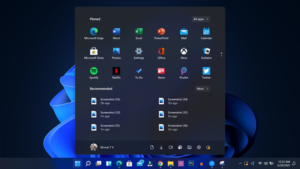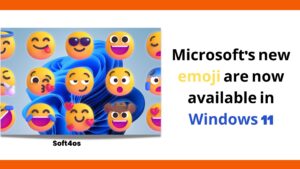In this blog post we will talk about Windows OS History: Evolution of Windows Operating System from 1 to 11. So, if you are interested in knowing the evolution of the Windows Operating System then keep on reading.
Windows OS History: Evolution of Windows Operating System from 1 to 11.
Windows Operating System, popularly known as Windows OS, is the most extensively used operating system encyclopedically, with over 1.3 billion active druggies worldwide.
The first interpretation of Windows OS was released in 1985, and since also, it has gone through a series of changes and upgrades to keep up with the evolving technological geography.
In this composition, we will take a deep dive into the elaboration of the Windows operating system, starting from the first interpretation to the rearmost one, Windows 11.
We’ll cover the major updates, features, and advancements that each interpretation brought to the table, and how it has impacted the computer assiduity as a whole.
Windows1.0( 1985)
Windows 1.0 was the first interpretation of the Windows operating system. It was released in 1985, and it was the first graphical stoner interface-grounded operating system by Microsoft. It allowed druggies to use a mouse to interact with the computer, which was a significant enhancement from the former command-line interface-grounded operating systems.
Windows 1.0 came with many pre-installed operations, including a textbook editor, a timetable, a timepiece, and a calculator. It also allowed druggies to run multiple operations contemporaneously, which was a game-changer for computer assiduity.
Windows2.0( 1987)
Windows 2.0 was released in 1987, two times after the release of Windows 1.0. It brought several significant advancements to the Windows operating system, including the capability to lap windows and the preface of keyboard lanes.
Windows 2.0 also introduced support for further memory and bettered plate capabilities, which allowed for more advanced operations to be developed.
Windows3.0( 1990)
Windows 3.0 was released in 1990 and was a significant enhancement over the former performances of Windows. It introduced several new features, including support for TrueType sources, which bettered the quality of the textbook on the screen, and the capability to use virtual memory, which allowed for larger operations to be run on the system.
Windows 3.0 also introduced Program Manager, which made it easier for druggies to organize their operations and lines. It also brought advanced support for multimedia, including sound and videotape playback.
Windows 95( 1995)
Windows 95 was released in 1995 and was a significant corner in the elaboration of the Windows operating system. It was the first interpretation of Windows to introduce the launch Menu, which made it easier for druggies to pierce their operations and lines.
Windows 95 also introduced support for long filenames, which allowed for further descriptive and systematized train names. It also brought significant advancements to the stoner interface, including the capability to customize the desktop wallpaper and screen saviors.
Windows 98( 1998)
Windows 98 was released in 1998 and was a significant enhancement over Windows 95. It introduced several new features, including support for USB bias, which made it easier to connect peripherals to the computer.
Windows 98 also brought significant advancements to the Internet Discoverer web cybersurfer, which made it easier for druggies to browse the internet. It also introduced support for DVD playback, which was a significant enhancement over the former CD- ROM technology.
Windows 2000( 2000)
Windows 2000 was released in 2000 and was aimed at the business request. It introduced several new features, including support for Active Directory, which made it easier for businesses to manage their networks.
Windows 2000 also brought significant advancements to security, including support for translated train systems and stoner account control. It also introduced support for a draw-and-play bias, which made it easier to connect and use new tackle.
Windows OS History
Windows is a family of operating systems developed and retailed by Microsoft Corporation. Then’s a brief overview of the history of Windows OS
- Windows 1.0 Released in November 1985, was Microsoft’s first attempt at a graphical stoner interface( GUI) operating system.
- Windows 2.0 Released in December 1987, added features similar to expanded memory support and bettered plate capabilities.
- Windows 3.0 was Released in May 1990, it was the first interpretation to gain wide fashionability, thanks to its bettered GUI, better performance, and support for virtual memory.
- Windows 95 Released in August 1995, was a major corner for Microsoft, introducing features similar to the launch menu, Taskbar, and long train names.
- Windows 98 was Released in June 1998, it was erected on the success of Windows 95, adding support for USB bias and Internet Discoverer4.0.
- Windows 2000 Released in February 2000, was designed for business druggies and introduced features similar to Active Directory and support for multiple CPUs.
- Windows XP was released in October 2001, it was a major overhaul of the Windows operating system, with a new stoner interface and significant advancements in performance and stability.
- Windows Vista Released in January 2007, introduced the Aero interface and added features similar to Windows Search and the Sidebar.
- Windows 7 Released in October 2009, was a refinement of the Windows Vista design, with bettered performance, better networking support, and enhanced multimedia capabilities.
- Windows 8 Released in October 2012, was designed for touch-screen bias and featured a new launch screen and app-centric stoner interface.
- Windows 10 Released in July 2015, it was designed to be a universal operating system for all types of bias, with a unified stoner interface and a focus on all services and apps.
Since the release of Windows 10, Microsoft has continued to modernize and ameliorate the operating system with regular point updates and has also introduced new performances similar to Windows 10X and Windows 11.




